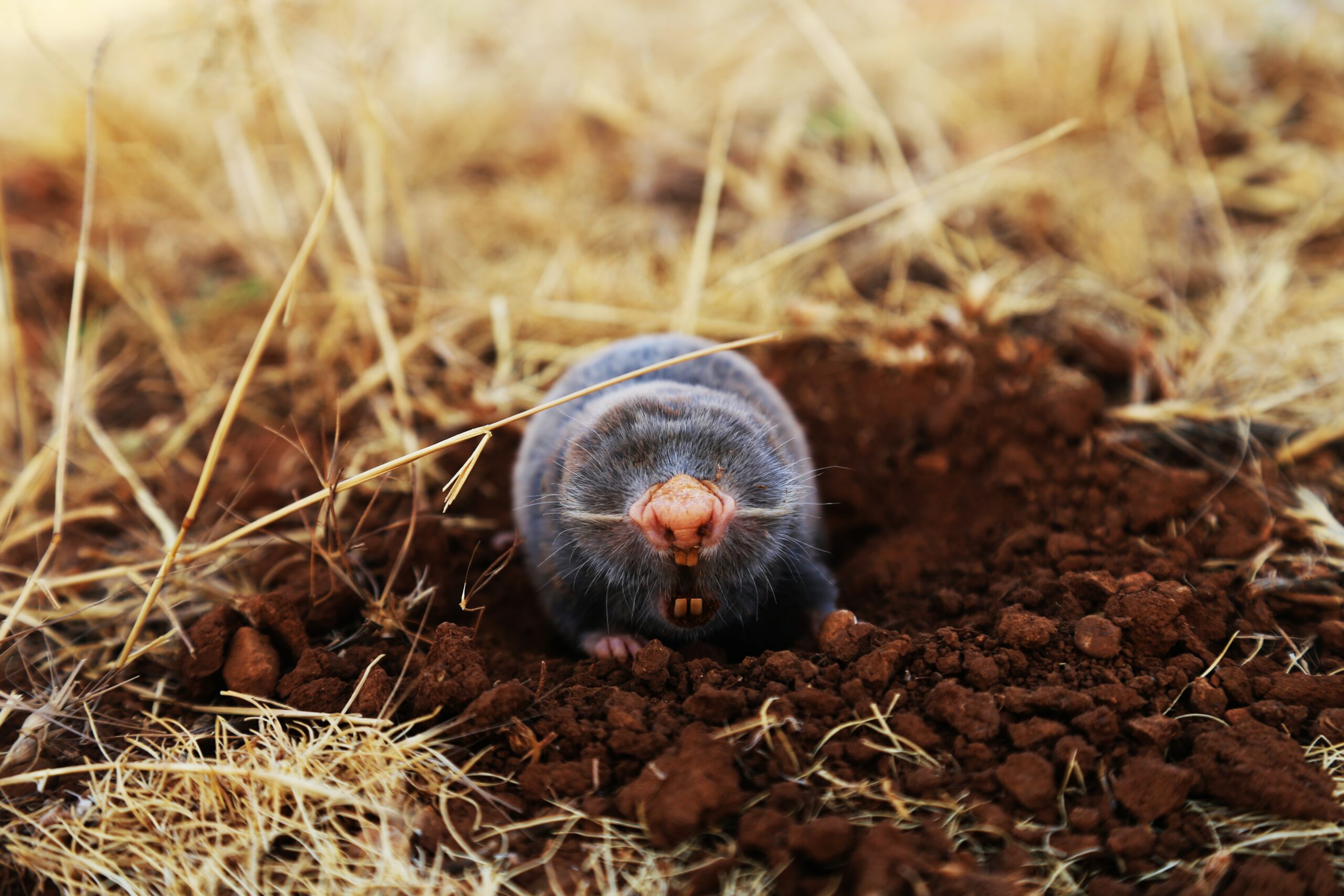
Moles & Voles – Small Rodents, Big Damage
Plenty of pests can ruin a lawn, but few can wreak havoc or destruction on your lawn quite like burrowing rodents can. Moles and voles are all fairly common throughout the American south, and they have a knack for making even the most seasoned lawn care expert seethe with frustration. These rodents have the ability to dig long, badly-damaging tunnels in a short amount of time, they are tremendously difficult to get rid of, and each carries a secret that few people realize: while they tend to cause the most visible damage to your lawn, they can actually cause even greater damage to your home as a whole.
Moles vs. Voles – Key Differences
Moles and voles are often mistaken for one another, but the two are actually quite a bit different from one another. Moles are typically what people think of when they think of burrowing vermin that ruins their lawn and puts their property at risk. These distinct creatures look unlike almost anything else in the world—they have no visible eyes, pink front claws that look like scoops, long snouts with a bright pink nose, and dark gray or brown fur that does not run in any particular grain or direction. They typically run no more than six to eight inches in length as a full-grown adult and are very rarely ever seen above ground. However, it’s this unique set of features that make them so adept at life underground. They have incredibly powerful senses that allow them to navigate through their network of tunnels with ease. And they definitely don’t struggle to construct new tunnels, either.
Voles are sometimes referred to as “meadow mice” and many people often mistake them for a rat or a mouse. They often have brown or light-grey fur that does run in a distinct grain, distinctly visible eyes, and small, round ears (not unlike mice). They can grow up to seven inches in length, but they typically grow to no more than about four or five in most cases. And unlike moles, they can sometimes be found above ground, though they tend to avoid above-ground life during daylight hours.
The easiest way to tell if you have a mole or a vole problem is actually to take a closer look at the tunnels in your lawn. If your tunnels are highly visible and have significant signs of soil upheaval, then there’s a good chance you’re dealing with a mole, as they need a bigger tunnel to pull their typically larger frame through. The entrance to a burrow hole is also a tell-tale sign—moles will typically surround their entrance with a large pile of excavated dirt that they have dug out around a hole that can be roughly two to three inches wide. Vole burrow holes, on the other hand, are typically about the size of a ping pong ball or golf ball and are generally not surrounded by any dirt. This makes them more difficult to find but does give you a good idea as to what issue you are dealing with.
Protect Your Foundation
Moles and voles alike are prolific tunnel diggers, digging out a network that can stretch over quite a long distance in a matter of just a few days. Often feeding on things like grass roots, grubs, earthworms, and other insects that they might find underground, these pests will often burrow right through gardens and trees that stand in their way. However, while these tunnels might be visible to the eye, what many people don’t realize is that their tunnels aren’t always where you can see them.
Moles and voles alike have a tendency to dig tunnels in the soil beneath your home’s foundation in search of food. While this rarely results in success, the tunnel they leave behind can significantly compromise the integrity of the land your home sits on. When these tunnels collapse, the land beneath your foundation weakens, resulting in cracks, shifting, sinking, and even collapsing if things get bad enough. To make matters worse, mole tunnels tend to carry water, and water that the soil absorbs often pools up in these tunnels. During the winter months, this water can freeze, causing the soil to shift even further. When it thaws, it further erodes the soil beneath your foundation, expediting foundation damage even further.
Signs of a Mole or Vole Problem
The potential for serious property damage is why we recommend responding quickly to any signs of a rodent problem. While the obvious signs include obvious tunnel entrance holes (particularly in the case of moles, where the entrance is surrounded by a big pile of dirt), you can also typically tell you have a burrowing rodent issue by simply walking on your lawn. If your lawn feels soft, spongy, and like freshly-laid sod, then there’s a good chance you have a mole or vole issue. While this could also indicate grubs, look for any indications of burrowed soil, such as cracks or distinct raised sections that form a tunnel-like structure. These are typically a tell-tale sign of a rodent problem that needs to be properly addressed.
